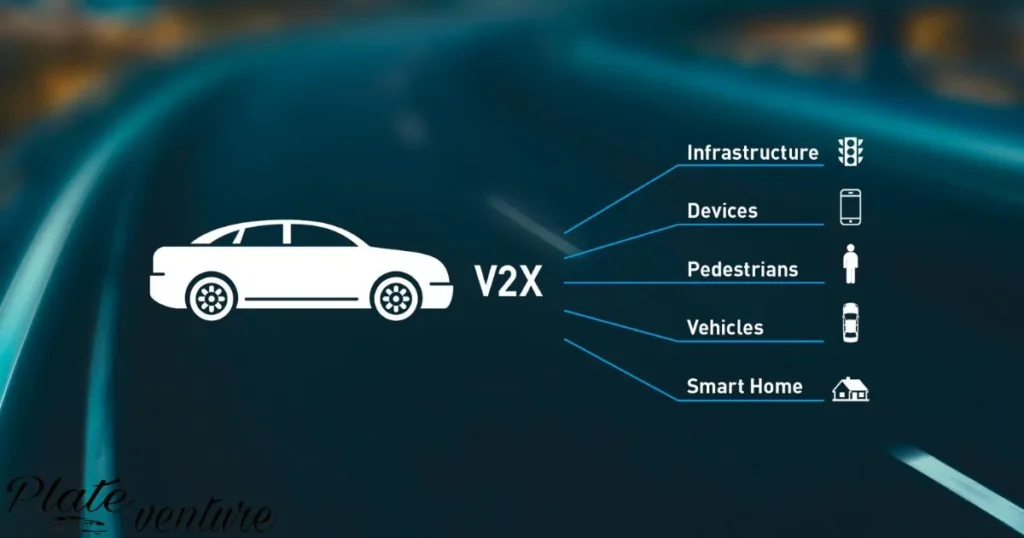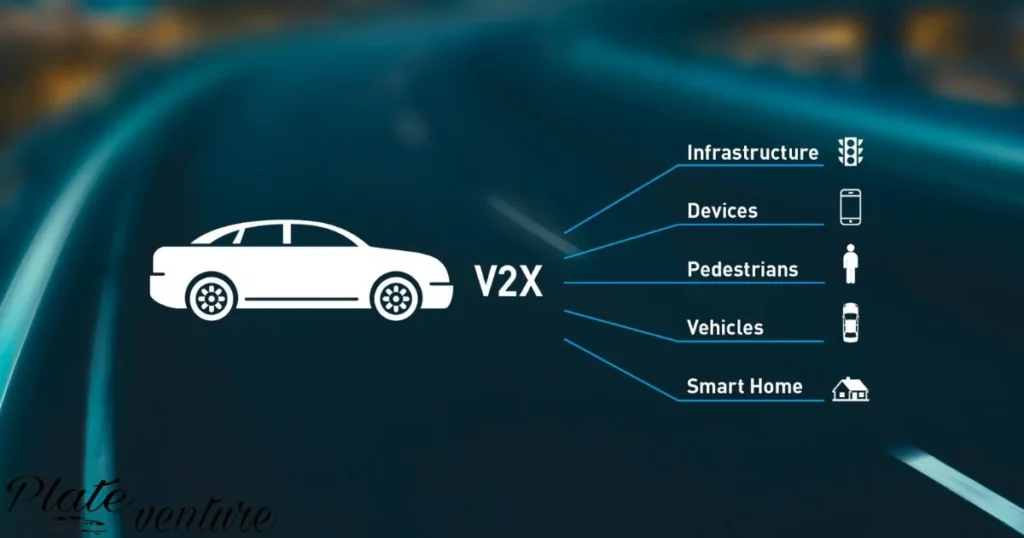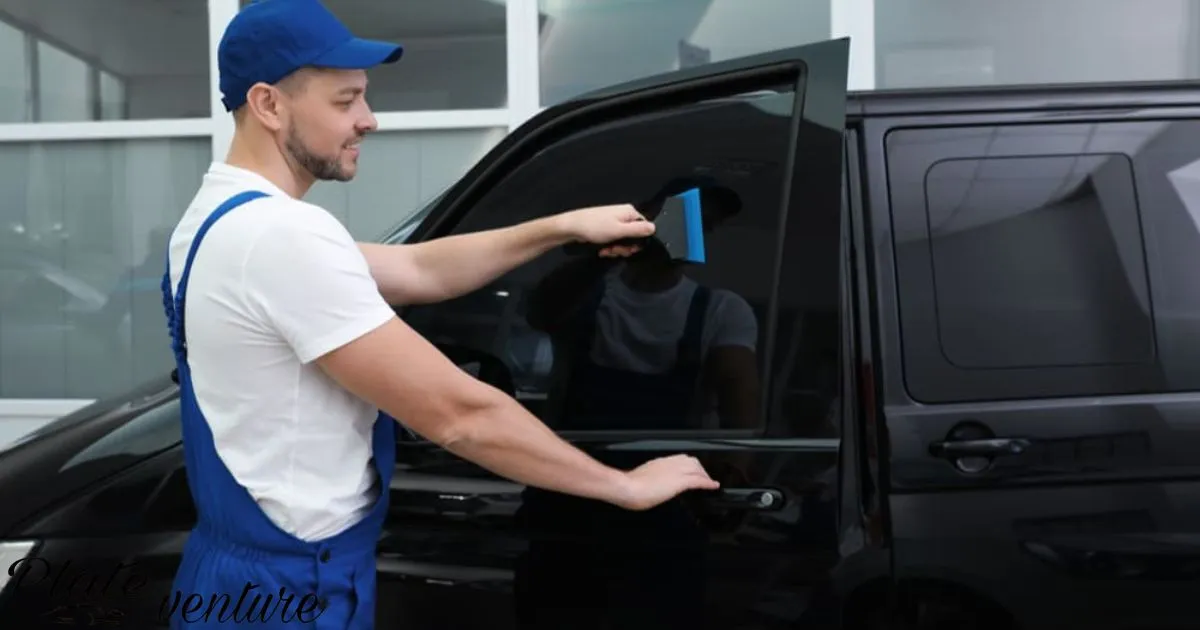Tinting car windows means adding a layer of colored or black film on the windows. This is done to block the sun’s harmful rays from entering the car. The film also provides privacy and protects cars interiors.
Have you ever wondered how much it costs to tint your car’s windows? The question “How Much Does It Cost To Tint Car Windows?” must have crossed your mind at least once. Getting an answer is important before deciding to get this modification done.
The cost to tint car windows varies depending on the size of your car and the type of tint being used. On average, expectations should be between $150 to $400. Smaller sedans tend to be on the lower end while larger SUVs and trucks require more tinting material so costs are higher. Darker tints also drive up the price compared to lighter shades.
Factors That Determine The Cost Of Car Tinting
Many things affect how much it will cost to tint your car windows. The type of tint film or solution and the size of your vehicle are two main factors. Window tinting provides many benefits like reducing sun exposure and increasing privacy. But the cost varies in each case. Knowing what determines pricing can help you find the best value.
The tint solution, your vehicle’s size, and how many windows you want tinted are the biggest factors in the final price. Film tints tend to be cheaper but liquid tints last longer. Small cars are less expensive to tint than large trucks. Tinting just the rear windows is cheaper than doing the entire vehicle. Getting quotes from multiple shops also helps.
What Type Of Car Tint Will You Choose?
When getting car windows tinted, you will need to pick between film and liquid tints. Film tinting involves installing a thin plastic film on the glass while liquid tint is a water-based dye applied directly to the window. Liquid tint offers superior heat and glare blocking but film tint is less expensive.
The type of tint chosen affects the cost. Film tinting is generally the most affordable option starting around $150-$300. Liquid tint provides lifetime guarantees but costs $250-$500 due to extra labor and materials needed. Knowing your budget can help decide between the two popular car tinting methods.
Film Vs Liquid Car Tint
With film tints, a thin adhesive plastic film is professionally installed on the interior of vehicle windows. Multiple shades are available from light to very dark tones. Film provides long-lasting privacy and sun protection at an affordable price. However darker films reduce visibility more.
Liquid tints are dye solutions directly applied to window glass on both the interior and exterior surfaces. They offer maximum heat rejection far surpassing film options. Liquid also allows any level of transparency from light to nearly opaque depending on the number of coats applied. Expect to pay more for this highly effective tinting technique.
Shades Of Car Tint
There are different shades of tint available from very light to super dark depending on needs and preferences. Lighter tints like 30% allow clear outside views while rejecting some heat and glare. Mid-range shades like 20% provide better solar protection without full opacity.
Deeper colors like 5% are nearly black from the outside. While perfect for privacy, Put Tint On The Outside Of Car Window very dark windows face legality issues in some places and visibility becomes low at night. Shades available affect costs too with darker choices being more expensive than clear or light window tints. Considering needs and local tinting laws is wise.
Specialty Car Tints
Beyond basic film and liquid tints, specialty options exist for those wanting unique vehicle looks or maximum window performance. Ceramic tints use treated films highly resistant to heat for extreme solar blocking. Some have infrared reflection for year-round air conditioning.
Metalized car tints come with a thin metallic layer that keeps parked cars up to 30 degrees cooler. While offering showroom shine, they tend to be the most costly at $500-800 for a full vehicle application. Knowing different specialty tint types helps determine price points for non-standard tinting solutions.
What Is The Size Of Your Vehicle?

A vehicle’s size is a key factor for tinting costs. Small sedans need the least material and take least time to tint. Prices start at $150-300 depending on shades and options chosen. Compact SUVs and crossovers take a bit more window space raising the costs slightly.
For example, a Honda Civic vs Ford Escape – the Civic’s smaller windows would be less expensive to tint. Mid-sized cars and trucks fall in the mid-range of $250-400. Larger full-size SUVs and trucks have significantly more glass area to cover. Tinting heavy-duty commercial vehicles can range $500-800 or more.
Small Cars And Car Tint Costs
Subcompact cars tend to offer the most budget-friendly window tinting due to their smaller size and limited glass surfaces. Having just two rear side windows and a back window kept private makes for an easy and fast tint job priced around $150-250.
Sedans like Toyota Corolla and Honda Accord are only slightly larger. A quality full vehicle tint typically costs between $200-300. Top shops often offer package deals and coupons for small car window tinting making it very affordable to gain sun protection and add auto security on compact vehicles.
Mid-Sized Vehicle And Car Tinting Price
The window areas on mid-size SUVs, trucks and family sedans are larger than compacts but still quite reasonable for car tinting. Expect to pay approximately $250-400 depending on film types and shades. Full-size pickups start moving up the price range compared to typical passenger cars.
Examples would be car tinting costs for vehicles like Ford Edge, Dodge Durango, Toyota Camry or Chevy Silverado. The additional windows increase material needs and labor time over subcompacts, so pricing sits in the moderate range. Top brands usually come with lifetime warranties protecting the investment on mid-sized daily drivers.
Large Suvs And Trucks Car Tinting Expenses
When tinting the biggest vehicles, prices rise due to extensive glass real estate and tougher installs. Full-size SUVs and large trucks take more in supplies and technician hours, lifting costs to commonly $400-600 or even higher for darker or specialty solutions.
Very large luxury crossovers or heavy work trucks often approach $500-800 to fully tint. Darker colors add further to large vehicle job costs. Yet professional window tint still comfortably pays back through energy savings, privacy and security on large family haulers. Just going in expecting higher investment that matches added glass surfaces.
Will You Tint All Windows?
Tinting choices go beyond just shades to deciding which windows on the car get treated. Doing rear windows solely is the most affordable option costing roughly half the price of a whole vehicle tint job. Front side windows increase the bill further if added to rears.
Going with rear windows alone typically falls between $150-300 based on vehicle size and tint type. Just those windows provide privacy from cars behind as well as increased security by obscuring interior visibility. Yet leaving fronts clear maintains safe visibility and follows some local sunscreen laws.
Front Windshield Car Tinting – To Do Or Not?
One consideration is whether to tint the front windshield, which is legal in most but not all places. While it blocks roughly 50% of infrared and heat, some states ban any darkening due to safety concerns. Light brow or celestial blue shades are usually allowed.
Tinting just the windscreen runs $100-200 alone but check laws first. Adding a light-colored strip along the top third of the windshield blocks glares without full tinting. Doing front side windows and a windshield protection strip together hits the sweet spot of heat reduction without facing potential fines.
Back Windows And Car Tint
Rear side and back windows are standard areas to tint for basic car window tinting. These windows are larger than the front sides. They benefit occupant comfort and add security through obstructing interior views while parked or broken into. Tinting only the back windows shaves costs.
Expect pricing of $150-300 on most vehicles just doing rears based on car size. That falls at the budget end of the spectrum while still achieving sun and glare reduction through blocking 50-90% of infrared rays depending on tint darkness. Back windows alone make an affordable entry to car window tinting benefits.
Side Windows And Estimating Car Tinting Costs
5 tips for estimating car tinting costs
- Material costs. Tint film itself comes in a variety of qualities and materials that impact price. Most basic economy films start around $100-200 while higher-end ceramic or graphene films can be $300-500.
- Window size. Larger windows like windshields and rear windows take more time and material to tint. Smaller windows like sides are cheaper. Expect larger windows to cost more.
- Tint darkness. darker tints require more layers of dye and are more difficult to install precisely. Very dark tints add $50-100 typically to the cost.
- Additional services. Some shops offer services like scratch removal or repair prior to tinting. These add-on services can bump up the price.
- Labor rates. Expect to pay $60-150 per window for labor depending on the shop. Multiple experienced installers can do all windows in 1-3 hours. Shops in expensive areas may charge more per hour of labor.
Getting an in-person quote that breaks down these factors is best. But as a guideline, basic tinting of all side windows usually costs $150-300. Adding the windshield or rear bumps it up to $300-500 range. High-end dark tints could reach $500-1000 depending on vehicle size.
What Is Included In The Car Tinting Service?
When getting a car tinting estimate, find out what exactly is covered. Reputable shops include basic material, accurate measuring, precise cutting, thorough cleaning, and quality installation. They also offer warranty options for added protection. Budget shops may try minimizing included services.
Look for full professional coverage at fair costs from experienced tinters. Skimping on any step can jeopardize results and safety. Proper material selection, precise fitting, and careful application assure perfect tint jobs that last for years while increasing your vehicle’s value.
Material Cost Of Car Tint
Most tinting material spending involves the actual window film roll or tint solution. Film costs fluctuate based on brand, shade, and vehicle glass size but usually range $75-150 for average cars. Darker films requiring more material are pricier. Liquid tint solutions containing dyes suitable for automotive use also vary in per-vehicle expense.
Specialty options like ceramic or metalized varieties demand premium pricing from $150-300 for the materials on a mid-sized vehicle. Make informed decisions on standard vs fancy solutions considering cost versus benefits like heat rejection abilities. Material investments return value through energy savings and comfort advantages.
Labor Cost For Installing Car Tint
Even with affordable tint supplies, professional labor makes up a hefty part of the total job price. Window tinting is a precise process when done correctly. Skill and time are needed for accurate measuring, cutting, cleaning, and smooth application without bubbles or wrinkles.
Expect mechanics charges of roughly $60-100 per installed window depending on vehicle size and market rates. Labor ensures long-lasting, bubble-free results. Dark or specialty jobs involving multiple fitting or application stages can push labor costs higher. Accounting for labor alongside parts makes total pricing understandable.
Additional Fees For Car Window Tinting
| Fee | Description |
| Consultation Fee | Some shops charge a small fee ($10-25) for an initial consultation to discuss tint options. This fee is usually waived if you book an appointment. |
| Removal/Installation Fee | If you want an existing tint removed before a new application, there will typically be a $25-50 fee for removal. Installation fees vary by shop. |
| Material Fee | Basic tint film starts around $100-300 depending on quality/car size. Specialty options like carbon or ceramic cost more. |
| Extra Window Fee | An extra charge ($15-30 each) applies if all side windows aren’t done at the same time. Back and rear windows also add to the cost. |
| Rush/Express Fee | A surcharge of around $25-50 may apply if you need tint done quickly within 1-2 days. This pays for priority scheduling. |
| Peel & Reapply Fee | If tint needs adjustment, a $15-30 fee covers peeling and reapplication to fix any problems or ensure lines are straight. |
| Ceramic Coating Fee | Some shops offer a protective ceramic coating application (around $200) during tint installation to help keep the tint looking new. |
How To Find The Best Price For Your Vehicle’s Car Tinting?

Comparing multiple estimates assures the most competitive pricing. Get minimum three in-person quotes describing your vehicle and desired tint levels. Reputable shops welcome inspections to understand jobs and provide precise offers. Going rate averages can vary between cities too.
Armed with options, negotiate respectfully for the best total package deal blending top-quality materials, workmanship, and value. Deals may use bundle discounts for multiple services or cars within a household. Seasonal promotions also offering introductory or referral savings. Diligent shopping optimizes car tint budgeting.
Get Quotes From Multiple Shops
Getting estimates from several local window tinting specialists gives a price range understanding without commitment. high-volume operations may offer slight discounts for scheduling multiple vehicles together which their installation teams can tackle efficiently. Boutique specialty shops focusing on harder jobs or exotic products tend toward the premium end of budgets.
Balancing features, warranty length, reputation reviews and total cost lets an optimal choice emerge. Feel welcome to compare itemized estimates line-by-line to scrutinize sometimes vague default bundle pricing too. Informed selection means satisfying results within planned spending.
Check Groupon For Car Tinting Deals
Group purchasing websites periodically feature competitive vehicle window tinting promotions redeemable at sponsoring local vendors. Signing up for deal alerts about upcoming applicable discounts lets savings be seized. The bargains may shave 20% or more off standard rates.
Terms require using offers within windows like two weeks and may not stack with other promotions. But extreme values are hard to pass on if project timing fits. Research featured sellers in advance through reviews too sinceGroupon is not a rating system itself. Limited window potentials motivate fast planning.
Ask About Car Tinting Bundles And Discounts
Voluming bundling multiple minor services within one visit earns package percentage breaks. Inquire about discounting total jobs combining tinting with other timely auto accessories or care like alarms, paint protection, or ceramic coating. Or bundle multiple vehicles under one family or fleet contract.
Seasoned shops routinely offer senior, student, emergency service industry or referral discounts too. It never hurts politely asking about any special promos for your situation that stretch the dollar further. Customers genuinely trying to save contribute to businesses nicely too by increasing lifetime patronage levels.
Frequently Asked Question
Will Tinting Reduce Visibility At Night?
Tinting does affect nighttime visibility slightly but is still legal and safe to drive with in most states as long as it meets light transmission requirements.
Can My Windows Still Roll Up And Down After Tinting?
Yes, tint film is applied on the inside of windows so it does not interfere with normal operation of windows at all. Windows can still be rolled up and down as usual.
Is There A Warranty On Window Tint Jobs?
Most reputable tint shops will offer a warranty, usually 3-5 years, to cover bubbling, peeling or other defects in the tint film or installation workmanship. Be sure to get warranty details in writing.
Is It Hard To Remove Tint Film Later If Wanted?
Removal is generally not too difficult but does require patience since the film must be peeled off in one continuous piece. A heat gun or soak with soapy water can help loosen adhesive before peeling.
What Are Some Factors That Affect The Tinting Cost?
Larger window sizes, darker tint shades, type of film used, and extra services all impact price. But on average expect to pay $150-500 total for a basic tint job on a car’s side windows. Back windows and windshield add to the cost.
Conclusion
Since material and labor costs rise with window size, vehicles with more glass area tend to have higher tinting bills. The darkness or shade of the tint film also plays a role in pricing. Very dark or opaque shades require more advanced films and careful application for an even result. These tints are often priced higher than a lighter limousine or smoke film.
In conclusion, how much it costs to tint car windows is affected by these key considerations. While exact pricing requires an in-person quote, most full window tint jobs for a sedan or small SUV range from $150 to $500 depending on the specific vehicle and desired tint level. Larger vehicles or specialty high-end films may push costs higher.








